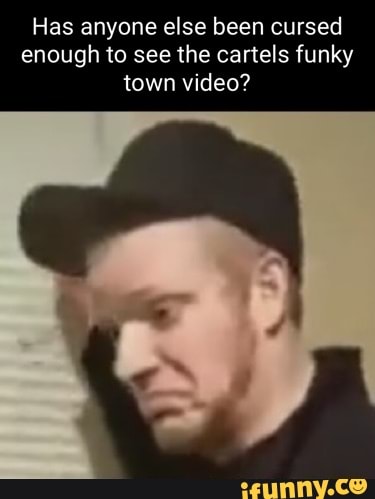Exploring the vibrant world of Funky Town Cartel offers a unique journey into the intersection of music, culture, and urban legends. This guide delves into the groovy beats that have become synonymous with a certain infamous video, uncovering the layers of meaning and cultural significance behind it all. From its origins to its impact on modern internet culture, Funky Town Cartel is more than just a catchy tune—it's a phenomenon that continues to captivate audiences worldwide.
As we dive deeper into this fascinating topic, we'll explore how a simple song from the 70s became intertwined with some of the darkest corners of the internet. The story of Funky Town Cartel is not only about music but also about the power of media and the way it shapes our perceptions. Through this article, we aim to provide insight into the cultural implications and the enduring legacy of this intriguing connection between sound and image. Let’s embark on this exploration together!
Groovy Melodies and Dark Legends: The Story Behind the Song
The song Funky Town has been around since the late 1970s, originally performed by Lipps Inc., capturing the hearts of many with its infectious rhythm and memorable lyrics. However, in recent years, it gained unexpected notoriety due to its association with a chilling video involving a Mexican cartel. This bizarre juxtaposition of a cheerful tune with graphic violence sparked widespread curiosity and discussion across online platforms.
There's an unsettling irony in how such a lively melody could accompany such grim footage. For those unfamiliar, the video features scenes of extreme brutality while playing Funky Town as background music. This stark contrast between joyous sounds and harrowing visuals has left viewers questioning the appropriateness of using popular songs in disturbing contexts. Yet, despite—or perhaps because of—this incongruity, the clip became viral content.
Many users on Reddit forums like r/Shrek2 or r/AnimalCrossing expressed shock upon discovering this dark side of the otherwise lighthearted track. They shared their reactions, wondering why someone would choose such a happy-sounding number for something so grim. These discussions highlight the complex relationship between art and reality, showing how different interpretations can emerge depending on context.
Unraveling the Mysteries: What Does It All Mean?
One might ask, what exactly does the connection between Funky Town and these notorious videos signify? Some speculate that the choice of music was deliberate, aiming to create cognitive dissonance or even mockery. Others believe it may simply reflect random chance or personal preference among those involved. Regardless, the pairing raises important questions about intent versus reception when consuming media.
In one instance, a user named u/cat_hero89 recounted watching the infamous video after hearing the song referenced elsewhere online. Their reaction mirrored countless others who found themselves grappling with conflicting emotions—amazement at recognizing the familiar tune alongside horror over witnessing horrific acts unfold before them. Such accounts underscore the profound effect this combination has had on public consciousness.
Moreover, there exists an entire subculture dedicated to analyzing and sharing similar types of content through platforms like YouTube channels (e.g., Disturbed Reality). Here, creators delve deep into understanding why certain pieces of music are used during violent executions carried out by cartels worldwide. By examining patterns within these selections, they hope to gain insights into psychological motivations driving perpetrators' choices.
A New Perspective: Beyond the Noise
Beyond the initial shock value lies another layer worth exploring—the sociocultural implications surrounding the use of Western pop music in non-Western settings. In particular, the prevalence of American hits like Funky Town being played during Latin American cartel operations suggests broader influences at play. Globalization plays a significant role here; as Western entertainment spreads globally, so too do its elements seep into local traditions and practices.
For example, consider the case mentioned earlier where someone living near a town called 'Funky.' While seemingly unrelated at first glance, this detail hints at deeper connections between global trends and regional identities. Perhaps residents embraced the name because it resonated culturally or symbolized aspirations toward modernity. Alternatively, maybe outsiders imposed it based on superficial observations tied to stereotypes perpetuated by media portrayals.
Ultimately, reflecting on these intersections allows us to better comprehend how shared experiences transcend geographical boundaries. Whether celebrating life-affirming rhythms or confronting darker realities, music remains a powerful force capable of bridging gaps and fostering dialogue across diverse communities. So next time you hear Funky Town, take a moment to appreciate both its universal appeal and potential hidden meanings lurking beneath the surface.

